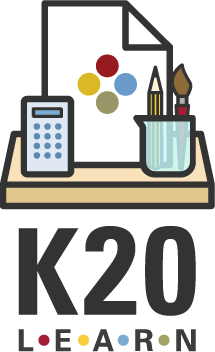Summary
In this lesson, students will research the concepts of genetic discrimination and discuss the ethics involved. Then, students will use the information to make an informed decision about genetic science and its role in today’s society.
Essential Question(s)
Is everything that is legally acceptable always ethically acceptable? What are the ethical dilemmas surrounding genetic information?
Snapshot
Engage
Students discuss what it means to be human.
Explore
Students work in groups and act as either a prosecution team or defense team. Students rotate through stations to gather research about genetically modified organisms.
Explain
Students prepare their opening and closing statements, including claims and citing evidence, as well as questions for the opposition.
Extend
Students present their debates. Students listening to debates evaluate each case they hear according to a rubric.
Evaluate
Students reflect on the essential questions of the lesson.
Materials
Lesson Slides (attached)
Source Collection (attached; one per student)
Case Preparation Notes (attached; one per student)
Case Preparation Notes - Teacher’s Guide (attached)
Case Evaluation (attached; one per student)
Case Evaluation Rubric (attached; one per student)
Articles that cover topics such as genetic engineering, the human genome project, genetic defects, genetic diseases, etc. (optional sources linked)
Speakers
Engage
10 Minute(s)
Begin by using the attached Lesson Slides and review the essential question and learning objectives on slides 3–4.
Move to slide 5 and pass out a blank piece of paper to each student. Review the Sketchnotes instructional strategy and explain to students that they will be listening to the beginning of a podcast. Ask students to take out a blank piece of notebook paper and tell them to take visual notes while they listen to represent what they are hearing. Encourage students to create a variety of sketches including symbols, lines, shapes, handwriting, diagrams, and more.
Play the beginning of the Radiolab podcast, “Mutant Rights.” Stop the podcast at 4:18 and move to slide 6. Pose the following question and have them respond to it on their Sketchnotes: “What does it mean to be human?”
Explore
40 Minute(s)
Display slide 7. Play the clip from The Great Debaters, stopping it at 4:03:
Explain to students that they will be participating in a “mock trial,” in which they will be debating the issue of genetic engineering and the ethics involved.
Place students into groups of 4–5. Tell students they will be conducting research to use in their debate. They need to locate and cite evidence from a range of sources to support their conclusions. This will give them perspective to analyze the information they will be reviewing.
Display slide 8. Assign half of the groups to serve as prosecution teams, and the other half to serve as defense teams. Using the information provided on the slide, explain what it means to be a part of each team.
Transition to slide 9 and assign one prosecution and one defense team to each of the following or similar topics related to ethics in genetics:
Topic: Human Genome Project and Genetic Discrimination
Prosecution Teams Research Questions:
How has information from the Human Genome Project been used to discriminate against individuals in employment or insurance?
How could access to someone's genome lead to a violation of privacy or consent?
Defense Research Questions:
How has the Human Genome Project advanced medical research and improved healthcare outcomes?
Are there examples where the HGP has helped identify and prevent inherited diseases in families or communities?
Topic: Mutations, Genetics, and Genetic Discrimination
Prosecution Teams Research Questions:
How could genetic modification lead to a new class system based on genetic traits or enhancements?
What dangers arise when society labels someone as a “mutant”?
Defense Teams Research Questions:
How can genetic manipulation be used to eliminate deadly diseases and improve quality of life?
What ethical guidelines exist to prevent the misuse of gene editing technologies?
Encourage students to use these questions to start but to also dig deeper into the research and find more key points to strengthen their arguments.
Move to slide 10 and pass out the attached Source Collection handout to each student. First, have students write out their research question in the space provided on the handout.
Next, explain to students that their group will rotate through different stations to gain a broad perspective on the assigned topic, but encourage them to focus on their concentrated area of research. Have students spend about 15 minutes at each station. Be sure to circulate the room and monitor students’ progress.
Explain
25 Minute(s)
Display slide 11 and show students the following debate format so they can plan and be familiar with how the debate will proceed:
Opening Statement (Affirmative: 1 minute)
Opening Statement (Negative: 1 minute)
Rebuttal (Negative: 1 minute)
Rebuttal (Affirmative: 1 minute)
Cross Examination (Affirmative: 2-3 minutes)
Cross Examination (Negative: 2-3 minutes)
Second Rebuttal, or Second Statement (Negative: 1 minute)
Second Rebuttal, or Second Statement (Affirmative: 1 minute)
Closing Statement (Negative: 1 minute)
Closing Statement (Affirmative: 1 minute)
Audience Questions (Optional: 2-5 minutes. Can be moved before Closing Statements.)
You will act as moderator during the debates to keep students confined to the time limits set. Explain to students the format and the time allotted for each portion of the debate. You may want to show them sample debates via video clips to prepare them to review this.
Tell students that during the debate the rest of the class will serve as the jury and will evaluate the arguments based on the rubric you will provide.
Transition to slide 12. Have students work with their team to prepare for the presentation of the case. Pass out the Case Preparation Notes handout. Use the attached Case Preparation Notes - Teacher’s Guide to help you facilitate this part of the lesson.
Have students prepare their opening and closing statements and then construct an opening and closing statement for the opposition. They will use the statement they created for the opposition to help prepare and anticipate the argument that will be constructed against them.
Then, have students list the five main points for their argument, including claims and citing evidence, and the opposition’s argument. Students will also need to begin to compose a rebuttal to the opposition’s argument and construct questions they will use during the debate to either strengthen their argument or weaken the opposition’s argument.
Extend
30 Minute(s)
Display slide 13 and pass the attached Case Evaluation and Case Rubric handouts to each student.
Review the rubric and evaluation with students. Before each debate, name the debate as Case #1 or Case #2. Tell students that they will serve as the jury and they are to take notes as they listen to the debates. These notes will support the scores they give each debate team and help them form questions to ask at the end. After each debate, you may take a poll of the class to get the total number of points awarded to each team and determine the winner of each debate.
Display slide 14. Using the debate format outlined in the Explain section, instruct students to present their arguments for their case. Remind the opposing side that they should fill out the rebuttal section of the Case Preparation Notes during the debate.
Evaluate
10 Minute(s)
Display slide 15. On the back of their Case Evaluation Notes handout, have students answer the essential questions in light of what they know now.
Overarching: Is everything that is legally acceptable always ethically acceptable?
Topical: What are the ethical dilemmas surrounding genetic information?
At the end of the lesson, have students turn in their response to the essential questions, the evaluation forms, the evidence collection handout, and the Case Preparation Notes.
Resources
ColumbiaYFD. (2013, April 16). YFD mock debate tutorial part 1 [Video]. YouTube. https://www.youtube.com/watch?v=oN6Z1WKVh8g
ColumbiaYFD. (2013, April 16). YFD mock debate tutorial part 2 [Video]. YouTube. https://www.youtube.com/watch?v=zeposE11Irg
Genome.gov. (n.d.). Genetic discrimination. https://www.genome.gov/about-genomics/policy-issues/Genetic-Discrimination
K20 Center. (n.d.). Sketchnotes. Strategy. https://learn.k20center.ou.edu/strategy/2870
Klitzman, R. (2013, June 16). Tenth anniversary of the mapping of the human genome: What it means for us all. HuffPost. https://www.huffpost.com/entry/human-genome-project_b_3081121
Lockwood, C. (2017). Not So Weird Science: Why Tracker Jackers and Other Mutts Might Be Coming Soon to a Lab Near You. In L. Wilson (Ed.), The Girl Who Was On Fire: Your Favorite Authors on Suzanne Collins’ Hunger Games Trilogy. Smart Pop.
Pen English. (2022, November 30). The hot spot - The Great Debaters [Video]. YouTube. https://www.youtube.com/watch?v=Ve7WKzFBiKo
Radiolab. (2011, December 26). Mutant rights [Podcast episode]. https://www.radiolab.org/episodes/177199-mutant-rights
Stein, R. (2015, April 23). Critics lash out at Chinese scientists who edited DNA in human embryos. NPR. https://www.npr.org/sections/health-shots/2015/04/23/401655818/critics-lash-out-at-chinese-scientists-who-edited-dna-in-human-embryos?utm_source=facebook.com&utm_medium=social&utm_campaign=npr&utm_term=nprnews&utm_content=20150423%2F
Tenney, G. (2015, June 22). Sorry, Avengers: US Gov’t says mutants aren’t human. Fox News. https://www.foxnews.com/science/sorry-avengers-us-govt-says-mutants-arent-human
Toy Biz, Inc. v. U.S., #248 F.Supp.2d 1234 (2003), https://scholar.google.com/scholar_case?case=18171183470766960868&q=Toy%2BBiz%2C%2BInc.%2Bv.%2BUS%2B%28248%2BF.Supp.2d%2B1234%2C%2B2003%29&hl=en&as_sdt=40000006&as_vis=1&scilh=0
U.S. National Library of Medicine. (n.d.). Genetics. MedlinePlus. https://medlineplus.gov/genetics/


